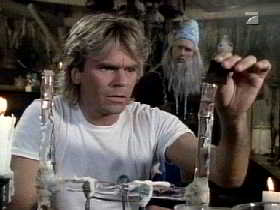220b-winter-2023/hw2
From CCRMA Wiki
Revision as of 15:25, 18 January 2023 by Ge (Talk | contribs) (Created page with "= Homework #2: "Homebrew" = === Due Dates === * milestone 0 (initial sounds + experimentation) '''due 2023.1.25, Wednesday, in-class''' * milestone 1 (listening: work in pro...")
Contents
Homework #2: "Homebrew"
Due Dates
- milestone 0 (initial sounds + experimentation) due 2023.1.25, Wednesday, in-class
- milestone 1 (listening: work in progress) due 2023.1.30, Monday, in-class
- final deliverables due 2023.2.3, Friday, 11:59:59pm
- presentation (listening: final musical statement): 2023.2.6, Monday, in-class
Reading & Listening
- Reading: "Musical Filters"—excerpt from Artful Design
- Listening: Paul Lansky's "Table's Clear" and "Night Traffic" (on Canvas => Files => Homebrew)
- Notes: "A Few (Programmable) Parameters of Musical Sound"
- Notes: "Elements for Creating Your Personal Musical Filter"
== Part 1: Brewing Specifications ==a
In this assignment, you are to record some "everyday" sounds, process/transform/arrange them, creating a composition that, in Paul Lansky's words, "views the mundane, everyday noise of daily life through a personal musical filter."
Specification
What to do:
- 0) spend some time planning things out in terms of the sounds you want to record, the transformations to perform, and how to put it all together.
- As with everyday life, some things might not initially work out as planned/hoped: be resourceful (think MacGyver), and be willing to adapt.
- 1) record a number of sounds around you
- can be many different types of sounds, or many instances of a single type of sound (e.g., traffic)
- note the origin of the sounds in your README
- also can find usable recordings, e.g., via FreeSound
- important: they must be sounds from **EVERYDAY LIFE** (e.g., no "space lasers", unless you live among space lasers)
- 2) process/transform/arrange/compose.
- check out the code examples from class in Canvas
- figure out what you want to do, experiment, try a lot of stuff, have fun
- use ChucK to process/transform the sounds
- the bulk of the arranging should be done in ChucK, with intermediate editing and late-stage assembly in Audacity
- if helpful, record and edit intermediate sound clips from ChucK into Audacity (via Jack)
Tools at your disposal
(note: these are the only tools you are to use (but you don't have to use all of them) - you'll need to obtain permission to use other software or sound samples you didn't record)
- any microphone (phone, laptop, hydrophone, studio, etc.) | something to record into (e.g., laptop/desktop)
- also can find usable recordings **of everyday sounds**, e.g., via FreeSound (please credit the source)
- ChucK (the bulk of the arrangement and processing should be done in code)
- Audacity/Ardour (only for preliminary sound isolation/editing + final recording/assembly)
SoX
Example of how to change snd file sample rate:
[cmn##] sox <inputfilename> -r 44000 <outputfilename>
Deliverables
turn in all files by putting them in your 220b web portfolio + submission to Canvas
- 1) project webpage + URL
- 2) title + clear description of your composition and what your inspiration was
- 3) all related source/sound files (.wav/.ck), as well as the final wave file
- 4) a short README text (readme.txt) file that:
- specifies instructions on running your programs
- describes your process/adventure, and perhaps the ideas (technical/aesthetic) behind the composition
- gives credit, if needed, for the sounds you are using
- describe any difficulties you encountered in the process
Thanks and have fun!!!
